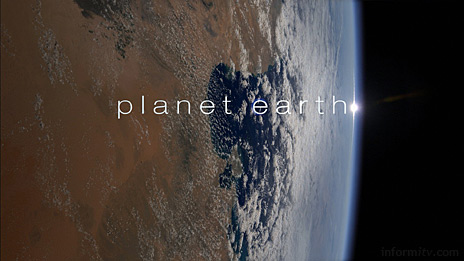The results of a limited trial of high-definition programming on digital terrestrial television in London show that viewers appreciate the quality but generally expect more high-definition channels as standard for free-to-air broadcasts.
The HDTV trial was the result of collaboration between the terrestrial television broadcasters in the United Kingdom. It aimed to test the technical viability and implications of delivering high-definition signals over the digital terrestrial television platform and to gauge consumer reactions to such a service.

While some countries already have high-definition services on digital terrestrial television, as an early adopter of digital broadcasting, the United Kingdom has plenty of channels but not enough capacity for high-definition transmissions.
Since the start of the World Cup coverage in early June 2006, a free-to-air high-definition service has been broadcast on digital terrestrial television in the London area using temporary spectrum made available under a one-year licence as part of a closed trial to just 450 homes.
Specially commissioned set-top boxes from Humax and ADB were used for the trial, which involved two multiplexes transmitting in the MPEG-4 AVC H.264 compression standard. A significant 20Mbps of bandwidth was allocated to each channel, meaning that the commercial networks had to share a single channel.
Programmes have been broadcast at various rates, from 19.5Mbps 1080i/25 (1440×1080) to 720p/50 (1280×720) at 14.3Mbps.
Unsurprisingly, the respondents reported high scores for picture quality. Interestingly, news was the genre that most people wanted to see in high-definition, although this was not available in the trial. This was followed by sport, comedy, drama and wildlife programming. Wildlife, sport and films were thought to benefit most from high-definition.
Seven in ten of those in the trial thought that high-definition will become the standard for all television in the future, with the majority expecting this to happen in the next year or two. Nine in ten thought that public service broadcasters should be at the forefront of high-definition delivery and at least half expected it to be free.
They expected at least six channels to be broadcast in high-definition. Only a quarter thought that it would be sufficient to have just two high-definition channels available.
The research suggests that high-definition services could be important in ensuring that digital terrestrial television remains a competitive platform, to avoid viewers migrating away to other services.
“It’s clear even from this small trial that audiences increasingly expect us and the other major broadcasters to offer high quality HD programming on Freeview in the future,” said Seetha Kumar, head of high-definition television at the BBC.
The current capacity constraints of digital terrestrial transmissions limit the ability to provide high-definition services, at least until analogue services are switched off.
“Both the broadcasters and government need to ensure the ongoing strength of the DTT platform as we approach switchover,” said Jonathan Thompson, director of strategy and research at Channel 4. “The trial has raised important questions about how the platform needs to evolve in order to support the delivery of the HD services required to ensure its future appeal.”
So far the trial raises a number of questions but provides few answers. It asks whether it is inevitable that high-definition will become the standard television format of the future, about the implications for its unavailability on digital terrestrial for the prospects of the platform and the development of the high-definition market, and the potential routes to providing high-definition on digital terrestrial television.
It may seem rather late in the day to be considering such questions, as the United Kingdom prepares to complete the transition to digital. Some might expect high-definition to be one of the benefits.
Given the pace of technological development, it is far from clear that what currently passes for high-definition will be the final format of the future. Notably, rather than simply being HD Ready, a new generation of screens already promise ‘Full HD’ 1920×1080 progressively scanned displays.
The trial will no doubt be used to lobby for further capacity for high-definition terrestrial television against competing demands for mobile services.
High-definition services are already available on satellite in the UK and to a lesser extent on cable. In the longer term, high-definition will also be available over broadband.
While terrestrial channels were engaged in a limited technical trial, Sky successfully launched its service on satellite. Nearly a hundred thousand homes took up its high-definition service in the first three months, making it the fastest moving new service launched by the satellite broadcaster.
With prices now falling, large flat screens are expected to be big sellers over the Christmas period, further fuelling the transition to high-definition.
